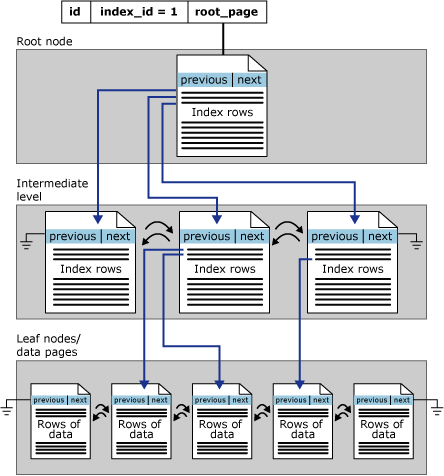Index larger than table
-
I am looking at the large amount of space taken up by indexes and have a few questions; I have been searching online for a while and can't find seem to find a direct answer. For context I have more of an Oracle background.
- On a table with a clustered primary key, is the row locater in a non-clustered index a small row id or the primary key itself?
- Does a table with a clustered primary key even have a row id?
- If there is no row id, why does a clustered primary key take up index space?
I'm trying to figure out why a non-clustered index with only one column takes up 20% more space than the table itself. Fill factor is 99.8%. However, 7 of the tables 9 columns are in the primary key. Also wondering why primary keys take up index space.
Thanks very much.
-
.1. The PK itself.
.2. No.
.3. The clustering key column(s) are stored in higher-level index entries. The deeper the index depth, the more space the upper levels of the index take.
SQL DBA,SQL Server MVP(07, 08, 09) "It's a dog-eat-dog world, and I'm wearing Milk-Bone underwear." "Norm", on "Cheers". Also from "Cheers", from "Carla": "You need to know 3 things about Tortelli men: Tortelli men draw women like flies; Tortelli men treat women like flies; Tortelli men's brains are in their flies".
-
January 7, 2020 at 8:29 pm
Thank you.
-
January 8, 2020 at 2:08 pm
Also, in SQL Server, when you're looking at a clustered index, remember, that's the table. The data is stored with the clustered index. There isn't any kind of separation between the two. We have four kinds of table storage: clustered index, heap, clustered columnstore, memory-optimized.
"The credit belongs to the man who is actually in the arena, whose face is marred by dust and sweat and blood"
- Theodore RooseveltAuthor of:
SQL Server Execution Plans
SQL Server Query Performance Tuning -
January 8, 2020 at 3:34 pm
Grant Fritchey wrote:Also, in SQL Server, when you're looking at a clustered index, remember, that's the table. The data is stored with the clustered index. There isn't any kind of separation between the two. We have four kinds of table storage: clustered index, heap, clustered columnstore, memory-optimized.
Thank you. That's exactly why I was wondering what was stored in the index space for a clustered index, I thought it was all in the data space since it's the table itself. It's typically less than 1% of the size of the table, so not significant though.
-
January 8, 2020 at 5:07 pm
The slight extra space is to store the upper level(s) (root level and intermediate level(s)) of the index, which are the b-tree structure that allows quick searches to specific row keys. The leaf pages are the actual data pages. Here's the basic structure of a clustered index.

SQL DBA,SQL Server MVP(07, 08, 09) "It's a dog-eat-dog world, and I'm wearing Milk-Bone underwear." "Norm", on "Cheers". Also from "Cheers", from "Carla": "You need to know 3 things about Tortelli men: Tortelli men draw women like flies; Tortelli men treat women like flies; Tortelli men's brains are in their flies".
-
January 8, 2020 at 5:23 pm
ScottPletcher wrote:The slight extra space is to store the upper level(s) (root level and intermediate level(s)) of the index, which are the b-tree structure that allows quick searches to specific row keys. The leaf pages are the actual data pages. Here's the basic structure of a clustered index.
Thanks, that's what I thought based on your original reply, but good to see the details.
Viewing 7 posts - 1 through 6 (of 6 total)
You must be logged in to reply to this topic. Login to reply
